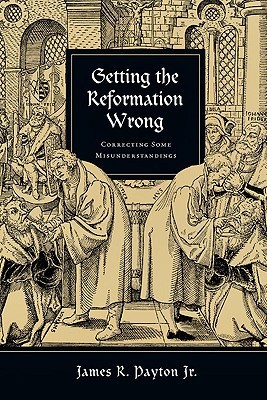What do you think?
Rate this book


272 pages, Paperback
First published July 2, 2010
By the Diet of Augsburg in 1530, all but one of the more than thirty Protestant religious leaders in the Lutheran camp had been trained in northern Christian humanism. Similarly, all those who became leaders in the nascent Reformed movement (following Zwingli in Zurich, Bucer in Strasbourg, and Oecolampadius in Basel) had been devoted adherents of the northern Renaissance. It is no exaggeration to state that, aside from Luther himself, the leadership of the Reformation was in the hands of northern Christian humanists. (pg. 70)
This notion of solitary faith nonetheless has led many pastors and evangelists to call their hearers… to be sure they can recount the date and the hour when.. they "prayed the sinner’s prayer" and thus were eternally saved, no matter what they might do in the rest of their lives. This calls people to rely on a spiritual birth certificate to know they are alive; the Reformers called them to live…. Justification sola fide has nothing to do with a call to such solitary faith. This is one of the most glaring and striking ways of getting the Reformation wrong. For the Reformers, justification is by faith alone, but faith is never alone. (pg. 131)
For the Reformers, sola scriptura found its boundaries in the faithful teaching of the church fathers, the ancient creeds and the doctrinal decrees of the ecumenical councils. Exposition of Scripture which remained within those limits could be expansive and imaginitive. However, to wander outside those limits and produce something “new” was for the Reformers not the mark of someone reading Scripture responsibly and using its authority rightly. How often, though, do Christians in the contemporary world hear about the allegedly scriptural “principle of seed faith” used to invite investment in a ministry? And what about “green prosperity prayer cloths” or the “health and wealth” gospel? None of these (nor similar aberrations) find any support whatsoever from the Protestant Reformation’s material principle of sola scriptura. (pg. 159)
Under Protestant scholasticism, faith was depersonalized to the acceptance of right doctrine–which could be objectively and convincingly laid out for others to see. For the Reformers, though, faith was first and foremost personal bonding to God–cleaving to him, assured of his loving embrace. Again, these two conceptions of faith need not exclude each other; the important issue is which one receives the chief place…. (pg. 208)